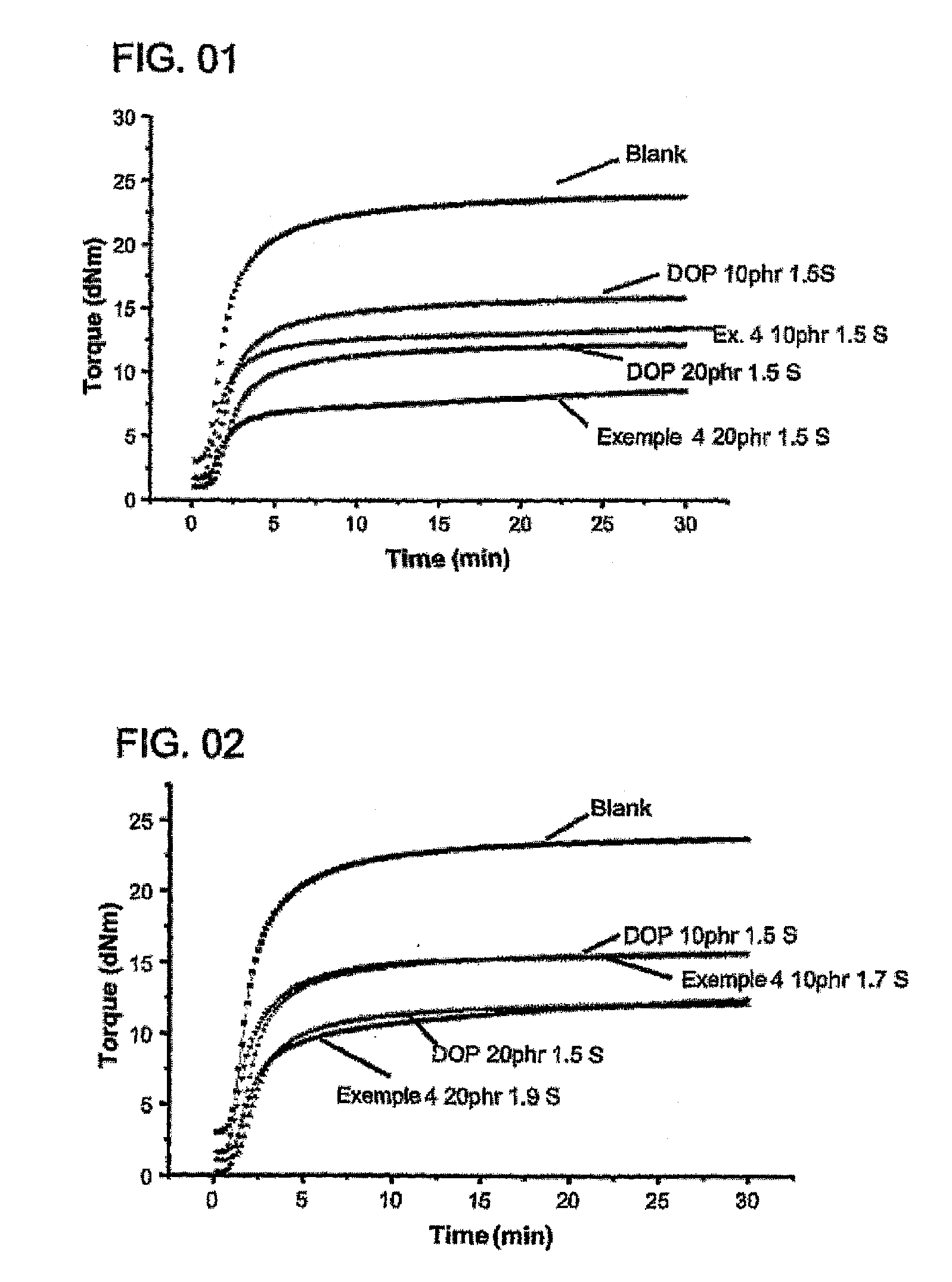Vegetal Oil Derivatives
a technology of vegetal derivatives and vegetable oil, which is applied in the field of development of vegetable oil derivatives, can solve the problems of high production cost of products and defects on the surface of pieces produced, and achieve the effect of reducing production cost and improving product quality
- Summary
- Abstract
- Description
- Claims
- Application Information
AI Technical Summary
Problems solved by technology
Method used
Image
Examples
example 1
[0041]Interesterification of soy oil with ethyl acetate to obtain a product with molar ratio G-(F)2 Ac / EtF=1.
[0042]Load the reactor equipped with stirring system and condenser with 879 g soy oil, 123 g ethyl acetate, and heat at 90° C. under nitrogen atmosphere. Add 4.4 g sodium methoxide. Heat at 115° C. and maintain for 1 hour. Add 1.5 g acetic acid to neutralize the catalyst. Heat at 125° C, distilling the excess ethyl acetate.
[0043]Create vacuum by maintaining for 1 hour a 40 mmHg absolute pressure.
[0044]Cool at 90° C. and add 88 g water for washing, keeping under stirring for 1 hour.
[0045]Decant for 1 hour and drain the water phase. Reheat at 125° C. and reapply vacuum for drying until the humidity content is below 0.2%.
[0046]A 48 g product is generated, and 49 g ethyl acetate is recovered by condensation.
[0047]Characterization of the product obtained:
Water content by Karl Fisher0.028%;Saponification index218.300 mgKOH / gram;Acidity index44.000 mg KOH / g;Brookfield viscosity at 2...
example 2
[0048]Interesterification of soy oil with ethyl acetate to obtain a product with molar ratio G-F(Ac)2 / EtF=0.5.
[0049]The reactor was loaded with 879 g soy oil and 325 g ethyl acetate.
[0050]The process from example 1 was repeated with the same amount of catalyst (4.4 g), and 1050 g of the product was obtained and 175 g ethyl acetate was recovered.
[0051]Characterization of the product obtained:
Water content by Karl Fisher0.027%;Saponification index237.00 mg KOH / gram;Acidity index1.63 mg KOH / g;Brookfield viscosity at 25° C.21.0 cPs (spindle 1 / 100 rpm);Density at 20° C.0.919 g / cm3.
example 3
[0052]Interesterification of epoxidized soy oil with ethyl acetate to obtain a product with molar ratio G-(F)2 Ac / EtF=1.
[0053]The reactor was loaded with 940 g epoxidized soy oil with 6.5% oxirane content and 123 g ethyl acetate.
[0054]The conditions of the example 1 were repeated, but the amount of sodium methoxide was increased to 46 g. 1010 g of the product was generated, and 46 g ethyl acetate was recovered by condensation.
[0055]Characterization of the product obtained:
Water content by Karl Fisher0.082%;Acidity index0.95 mg KOH / g;Brookfield viscosity at 25° C.150.0 cPs (spindle 1 / 20 rpm);Density at 20° C.0.988 g / cm3;Epoxy content 5.85%;Sludge content1.15 gl2 / 100 g sample
PUM
| Property | Measurement | Unit |
|---|---|---|
| boiling point | aaaaa | aaaaa |
| humidity content | aaaaa | aaaaa |
| compositions | aaaaa | aaaaa |
Abstract
Description
Claims
Application Information
 Login to View More
Login to View More - R&D
- Intellectual Property
- Life Sciences
- Materials
- Tech Scout
- Unparalleled Data Quality
- Higher Quality Content
- 60% Fewer Hallucinations
Browse by: Latest US Patents, China's latest patents, Technical Efficacy Thesaurus, Application Domain, Technology Topic, Popular Technical Reports.
© 2025 PatSnap. All rights reserved.Legal|Privacy policy|Modern Slavery Act Transparency Statement|Sitemap|About US| Contact US: help@patsnap.com

